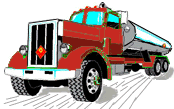
| WASTES | ||

|
|
|||||||||
|
Generate and Transport
What Are Hazardous Waste Generators and Transporters? Generators are individuals that produce hazardous waste, usually as a result of an industrial process. Transporters are individuals or entities that move hazardous waste from the generator off-site to a facility that can recycle, treat, store, or dispose of the waste. For the regulations about identifying hazardous waste, see 40 CFR 261 . Hazardous waste may be transported to another location to be treated, stored or disposed, or may be managed at the place of generation. When waste is to be transported off-site, the generator prepares a shipping document called a manifest. This tracking form must accompany the waste to its final destination, and is used to track the waste from "cradle-to-grave." For additional information see The Hazardous Waste Manifest. Regulatory definitions for generators and transporters can be found at 40 CFR 260.10 Are All Hazardous Waste Generators Regulated in the Same Way? No, hazardous waste generators are divided into three categories, based on the amount of waste produced, and are subject to different levels of regulation. The three types of hazardous generators are: (Please note that the following provides only brief generator definitions. For more detailed information, refer to the links under each generator type.)
What Are the Requirements for Hazardous Waste Generators?
What Are the Requirements for Hazardous Waste Transporters? Requirements for transporters include: (see also 40 CFR 263 [Adobe Acrobat PDF File]).
The Hazardous Waste Manifest The Uniform Hazardous Waste Manifest (the manifest) is a form used to
track the movement of hazardous waste from the point of generation to
the point of ultimate disposition ("cradle to grave"). (For information
regarding the manifest requirements, see 40
CFR part 262, subpart B .
Other Documents Related to Hazardous Waste Generators and Transporters
Municipal Solid (Nonhazardous) Waste Generation and Transport Information
|
|
|
||